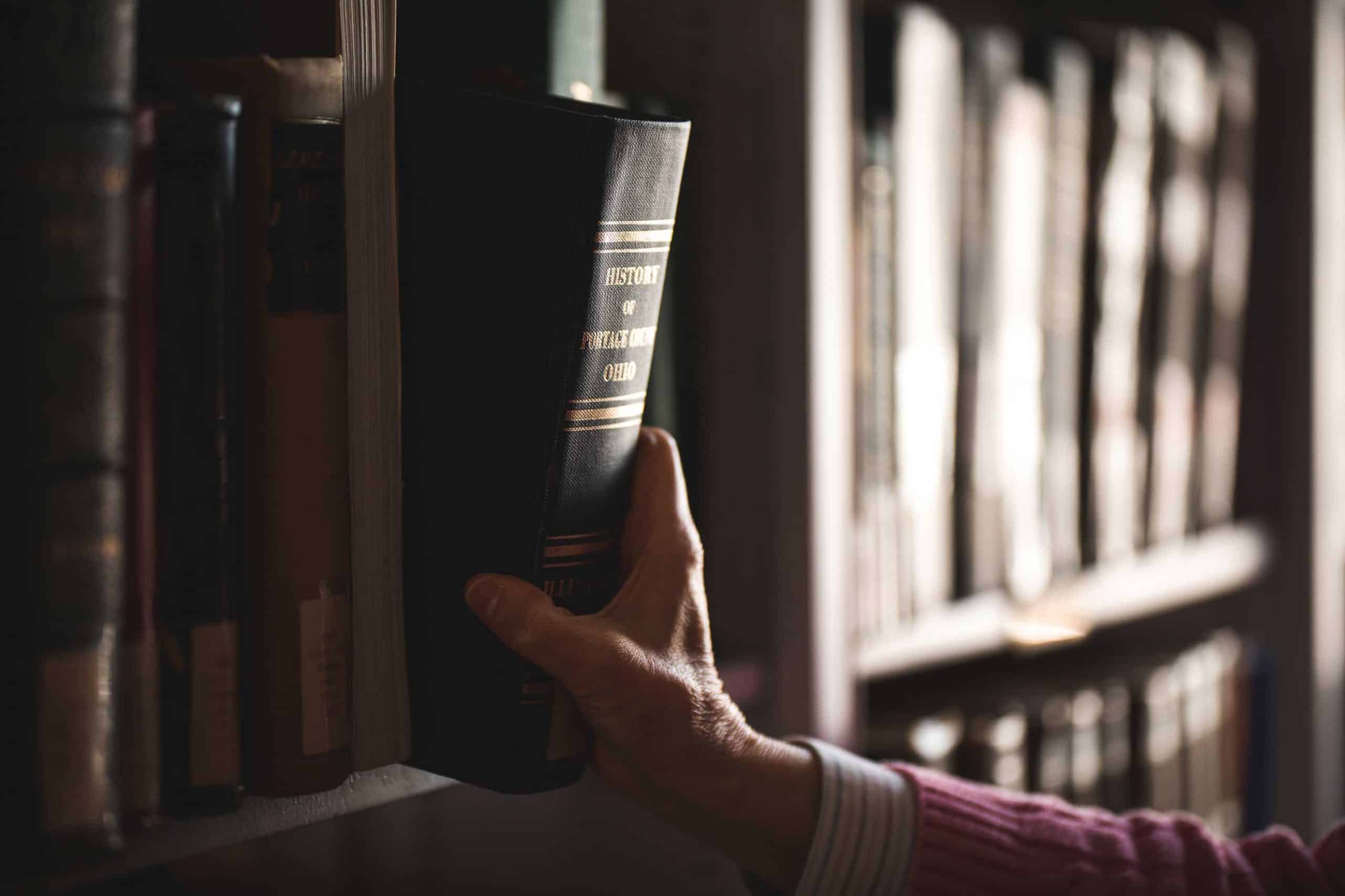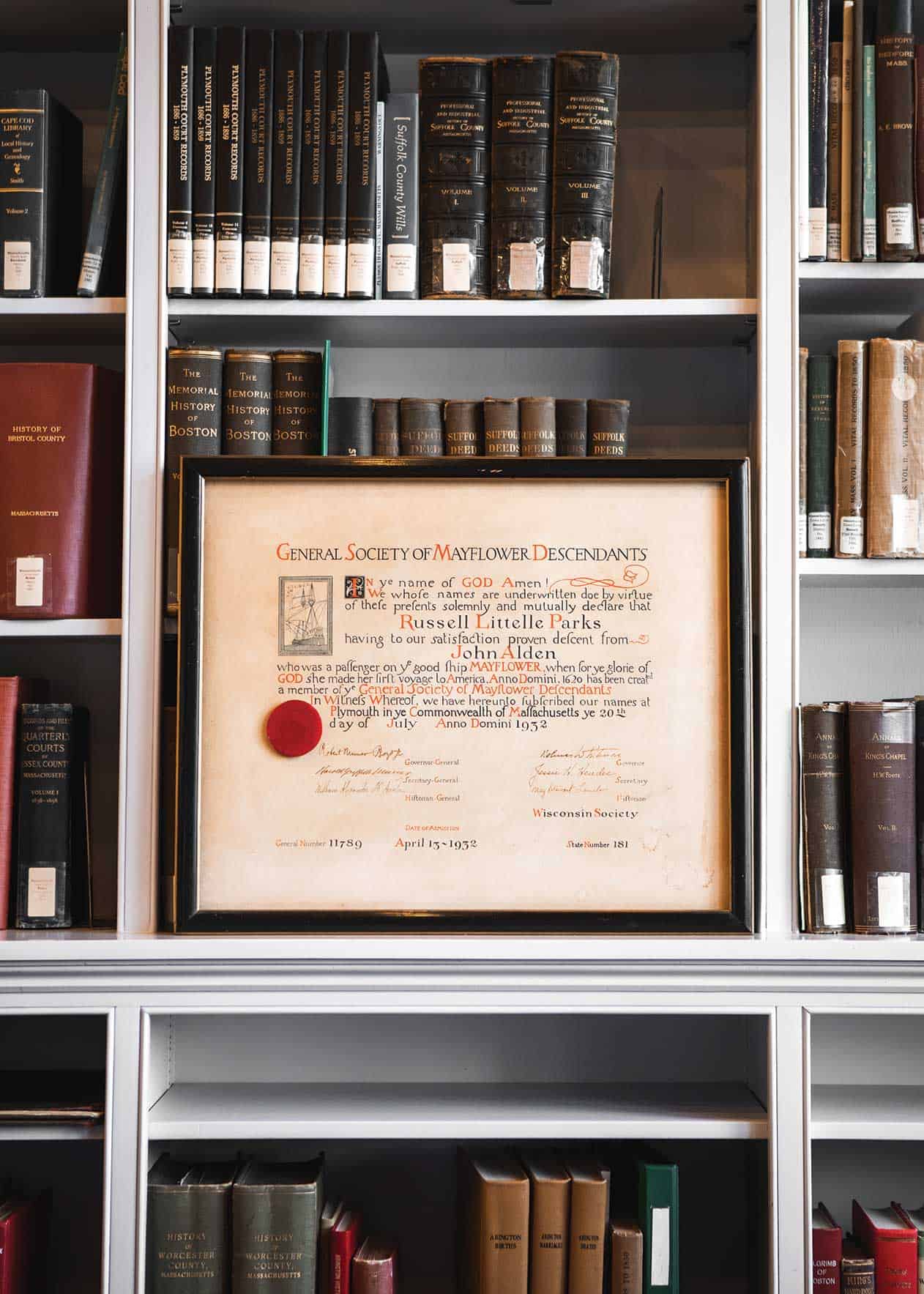Genealogy buffs discover family ties to Mayflower passengers.
Written by Dave Kindy | Photography by Derrick Zellmann
Are you a Pilgrim? A descendant, that is. Odds are you might be. An estimated 35 million people worldwide can claim that their ancestors sailed aboard the Mayflower in 1620. Many Americans are able to trace their lineage back to the original settlers of the Plymouth Colony, including noteworthy celebrities and historical figures, such as Humphrey Bogart, Marilyn Monroe, Ashley Judd, Cokie Roberts, Clint Eastwood, Katherine Hepburn, John Lithgow, Richard Gere, Bing Crosby, Julia Child, Franklin Delano Roosevelt, Ulysses Grant, John Adams and John Quincy Adams. As Plymouth commemorates the 400th anniversary of the Mayflower voyage in 2020, increasing numbers of people are setting out to uncover their own family’s heritage.
Genealogical research takes time and diligence, but the end results can be well worth it. Finding out where you came from is exciting and often surprising. It can lead you down unexpected avenues of discovery and the occasional dead-end alley of disappointment. But as the saying goes, it isn’t so much about reaching the destination as it is experiencing the journey itself.



Tracing your family back to William Bradford, Myles Standish, John Alden or Priscilla Mullins can be a daunting task. For many people, it means going back 13 or more generations. So where do you begin?
Midge Hurtuk, Historian General of the General Society of Mayflower Descendants (also known as the Mayflower Society) – the final arbiter of Pilgrim parentage – has a simple suggestion: start with yourself.
“With genealogy, you are always working backwards,” says Hurtuk. “The best place to start is with you. Begin with your birth certificate and those of your parents, and then work back from there.”
The goal is to establish a direct, traceable lineage that tells your origin story. Doing that can require some sleuthing since you need to have access to vital records, such as birth, death and marriage certificates, which usually include names of immediate relatives and sometimes birthplaces. These can help identify previous generations and give clues as to where to look for their paperwork so you can continue the hunt. “The first five generations are usually the easiest,” Hurtuk says. “After that, it can get progressively more difficult.”
That’s because many places didn’t adhere to strict standards for the recordkeeping of important documents until the mid-19th century. Searching for vital records before then can be haphazard since some paperwork is incomplete and even nonexistent.
A couple of centuries ago, these records were usually kept by churches or parishes. Many of those manuscripts were turned over to local or state archives, but not always. And back then, they weren’t kept in humidity-controlled fireproof rooms, so time and nature may have had the opportunity to exact a debilitating effect.
If accurate primary records are not available, there are other ways to track down forgotten forebearers. Start sorting through family heirlooms for letters, bills of sale, land deeds, wills, probates, military records, immigration documents and even sacred texts. At one time, it was common to record births, marriages and deaths on blank pages of the family Bible. While not authoritative, these notations may provide additional clues as to where to look for more reliable documents or at least provide a framework for making a case for ancestry.
“To join the Mayflower Society, direct lineage has to be well proven with primary records,” says Hurtuk. “We will accept secondary records, such as wills and deeds, but the weight of evidence has to be pretty convincing.”
Family lore is also a good source of inspiration when trying to determine heritage. Passed down for generations, these oral traditions may offer a suggestion of succession that could lead to establishing an ancestral link. But be careful. The histories told by Aunt Bev or Grandpa Jones are often prone to hyperbole – if not downright fabrication.
“In our family, we had been led to believe that we were descended from Francis Cooke, one of the signers of the Mayflower Compact,” Hurtuk says. “When we did the research, we found out that was dead wrong. It turns out we are related to James Chilton, who also signed the Compact but died onboard ship in Provincetown. His wife and children settled in Plymouth.”
There are several online services that make searching for lost relatives a bit easier. Ancestory.com, AmericanAncestors.org and CyndisList.com are among the more popular. The Church of Jesus Christ of Latter-day Saints – also known as the Mormons – maintains the FamilySearch.org website, which also includes important research. Most of these services offer family trees of established lineage that can speed up the process of finding your ancestors.
The key is to find primary sources that link one generation to the next. If you’re able to establish a direct line to a great-great-great grandson or granddaughter of the 102 passengers on that very first voyage, you’re home free.
Headquartered on Winslow Street in Plymouth, The General Society of Mayflower Descendants maintains an impressive library of authoritative volumes on all-things Pilgrim. This is where the rubber meets the road – or in this case, the descendant meets the predecessor – in determining direct lineage. Margaret “Marti” Bobertz, Director of Genealogy and Research Services, leads a team of research experts who carefully check each applicant’s research to establish verity and verisimilitude.
“I tell people not to get discouraged,” says Bobertz, who is herself descended from passengers John Alden, William and Priscilla Mullens, Myles Standish, Henry Sampson and Richard Warren. “The Silver Books will get you generations one through five,” she explains, gesturing to a series of volumes with metallic covers. Published by the Mayflower Society, these books are the result of meticulous investigations to substantiate the identity of individuals and families descended from Mayflower passengers. Researchers spend hours checking birth, marriage and death records and interpreting handwriting on property deeds and other documents. Volumes six and seven are currently still in the works.
Once a connection to a Mayflower passenger is established, individuals are welcome to join the Mayflower Society through one of its 53 member groups (each state, the District of Columbia, Canada and Europe have chapters). As a member, you receive a membership certificate, official recognition of your lineage and a chance to store family papers in the society’s vault.
Whether you find out you are a descendant or not, discovering your family’s past is a fun and important activity that can open doorways of self-discovery. It presents history on a personal level and helps us learn life lessons about the struggles and sacrifices our ancestors endured in order to get us where we are today.
“I was bitten by the bug,” says Hurtuk. “Learning about my family history was very rewarding. It provided a reassuring perspective on existence by helping me to understand where I came from. I just love it.”


